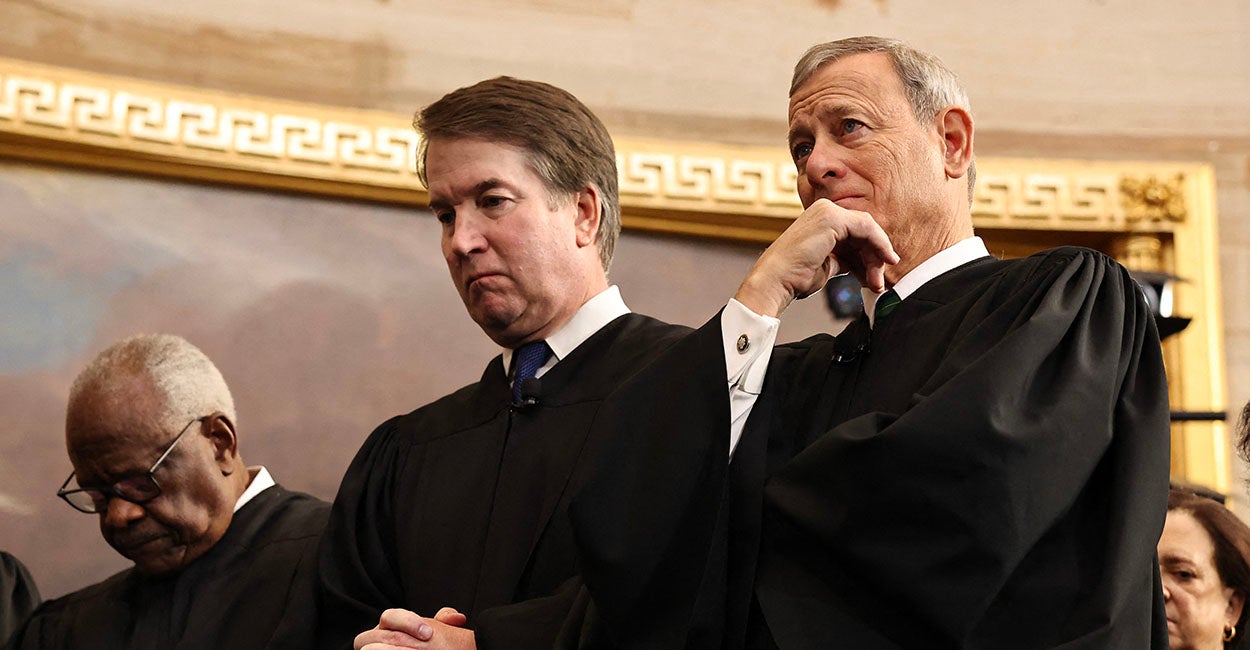


District court judges have usurped President Donald Trump’s control over the Executive Branch, too often requiring the Supreme Court to intervene to stop the judicial insurrection.
Unfortunately, the court has often done so via the “shadow docket” by acting on emergency petitions the administration has appealed to the top. While the court has often made the right decision against the judicial insurrection, emergency orders rarely give the opportunity for the Supreme Court to explain its reasoning, and the liberal justices have leapt into the vacuum with loud and misleading dissents.
This means the Left’s opposition to the Supreme Court’s decision is on record, while the reasoning behind the court’s true action remains opaque.
Justice Elena Kagan, a Barack Obama appointee, complained about this last week.
“The orders themselves don’t tell anybody anything about why we’ve done what we’ve done,” she said in remarks to the Ninth Circuit Judicial Conference in California Thursday.
She noted a recent case, McMahon v. New York, in which the court stayed a district court order that blocked the Department of Education from implementing Trump’s order to wind down its operations.
“A casual observer might think the president does have legal authority to dismantle the Education Department” due to the stay, Kagan noted.
That’s not what the order means, however. The order merely blocks the district judge from preventing Trump from carrying out the policy while the district court considers the merits of the case.
I don’t often agree with Kagan, but I find myself nodding along when she says the Supreme Court has “a real responsibility” to explain these orders.
In McMahon v. New York, the Court’s majority issued a four-sentence order that barely takes up half a page, while Justice Sonia Sotomayor (another Obama appointee) wrote a scathing 19-page dissent, in which Kagan and Justice Ketanji Brown Jackson (a Joe Biden appointee) support the judicial insurrection.
Two major cases involved Trump attempting to fire bureaucrats and judges ordering their reinstatement until the end of their cases.
The Supreme Court stayed one order in Trump v. Boyle, citing its previous “shadow docket” ruling staying another order in Trump v. Wilcox.
The court’s unsigned order noted the justices’ “judgment that the government faces greater risk of harm from an order allowing a removed officer to continue exercising the executive power than a wrongfully removed officer faces from being unable to perform her statutory duty.”
It’s easy to miss this point: The Supreme Court isn’t ruling that Trump had the legal right to fire these particular people, but rather that it harms his authority as president for courts to temporarily reinstate them during the course of litigation. This harm outweighs the harm of the bureaucrats being unable to fulfill their duties during that same time period—the potential harm on which the liberal justices focus.
Justice Brett Kavanaugh (a Trump appointee) wrote a concurring opinion, noting that he would not only have granted the stay, but he would have also taken up the case and decided it. He warned that if the court grants a stay without taking up the case, “we may leave the lower courts and affected parties with extended uncertainty and confusion.”
In Trump v. Boyle, Kagan dissented, accusing the court of using “its emergency docket to destroy the independence of an independent agency, as established by Congress.”
The bureaucrats in these cases—Democratic members of the National Labor Relations Board, the Merit Systems Protection Board, and the Consumer Product Safety Commission—all helped lead agencies that Congress created to be “a classic independent agency—a multi-member, bipartisan commission,” Kagan noted.
Unnatural creations of the expanding administrative state after the New Deal, these agencies represent an ungodly amalgam of executive, legislative, and judicial power that is antithetical to the Founders’ vision for the Constitution. In many cases, regulatory agencies act as judge, jury, and executioner, with the ability to establish rules, find citizens in violation of them, and impose penalties. Furthermore, Congress—the branch most accountable to the people—dodges its lawmaking responsibility by offloading its work to these agencies.
Nonetheless, the Supreme Court upheld their constitutionality in Humphrey’s Executor v. United States (1935).
By creating “quasi-legislative or quasi-judicial bodies” to implement legislative directives, Congress may “forbid their [members’] removal except for cause.”
The American people elected Trump to bring accountability to the insulated world of bureaucratic Washington, and that’s why the deep state fought tooth-and-nail to stymie him during his first term.
Now that Trump has returned to Washington with a vengeance, the leftist groups that helped advise Biden have challenged Trump’s reforms in court, and the district court judges are all too happy to assist them.
The Supreme Court is right to restrain them, but it needs to go further. For the good of the country, the court must reverse Humphrey’s Executor and explain, once and for all, that the president—not the judges or the deep state—has authority over the executive branch.
